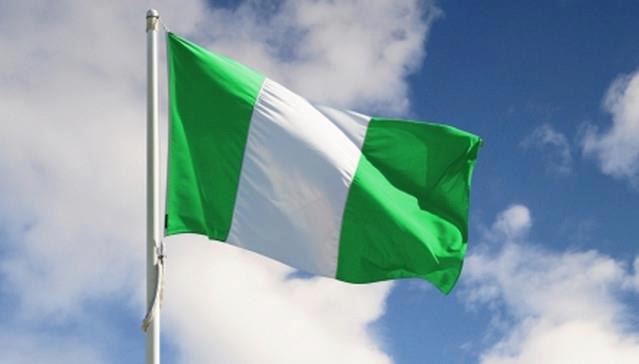Nigeria’s finances are in a precarious state and unless there is adequate liquidity for the government and the private sector, the country will continue to remain fragile to external shocks.
Since the collapse in global oil prices, Africa’s largest economy has seen actual revenues dwarf projected revenues, which has made the government resort to taking on huge external borrowings to meet its expenditure obligations.
However, if there are countries in the world that have successfully scaled through similar situations as Nigeria, India, the world’s most populous nation after China, is a sure example to learn from. Reforms the nation enacted some 30 years ago helped it attract sufficient investments, reduce unemployment and lift well over 370 million of its populace out of poverty.
In the late 90s, the Indian government flagged off economic policy reforms in the business, manufacturing and financial services industries, targeted at boosting economic growth.
The reform was a model referred to as Liberalisation, Privatisation and Globalisation (LPG). The major aim of the LPG model was to slacken government regulations hurting the growth of investment in the country, transferring of state-owned assets and positioning the country for consolidation among various economies of the world.
With these reforms, the Indian economy grew the overall amount of overseas investment to $5.3 billion in four years from a microscopic $132 million in 1992. Today, the country is ranked the second-highest destination for investment in the world, according to data from the United Nations Conference on Trade and Development (UNCTAD).
For Africa’s most populous nation, the government has over time complained of a shortfall in revenue even though it currently sits on idle assets scattered around the country.
Nigeria has dead capital that is worth as much as N900 billion majorly in the real estate and agricultural sector, according to estimates done by global consulting firm, PricewaterhouseCoopers. The country got about $23 billion in remittances in 2018, and a dismal amount of Foreign Direct Investments (FDI), compared to peers. It also has low levels of external liquidity (compared to the size of its economy) in the form of foreign reserves.
“By unlocking idle assets, improving remittances and making the environment more attractive for FDIs, the government can create the needed liquidity that is required for economic growth,” Ayo Teriba, chief executive officer, Economic Associates, said.
“Going to FDIs puts you in the driver’s seat. Egypt unified its exchange rates and boosted its supply of liquidity. As for remittances, if you can’t embrace your non-residents to send money home, how do you attract foreign investors? We need to move up the remittances and FDI table to join the likes of India and China,” he said.
Teriba added that Nigeria could securitise (not sell) its financial assets (such as LNG/oil JV equity stakes) to get more liquidity, privatise brownfield assets and liberalise other sectors of its economy like rail, for investors to pump money into, leading to increased overall liquidity in the economy.
According to Teriba, if there is no liquidity in the system, there won’t be stability; ease of doing business in a country would be threatened; growth would be slow; infrastructural deficit would widen; diversification agenda can never be achieved; unemployment would skyrocket and the well-being of the populace would continuously diminish.
Nigeria’s postal service currently has about 2,000 buildings in prime locations around the country, BusinessDay investigation shows. Nigeria also has a total of 2,000 police stations and 235 prisons all located in commercial locations across the country.
Teriba argued that the government could securitise or commercialise these assets by opening equity investments as these would attract more external liquidity and help the country in building buffers.
Data compiled by BusinessDay show that Nigeria is the most domestic illiquid country across Africa. In 2017, the total money available in circulation as a percent of Gross Domestic Product (GDP) stood at 19.5 percent.
This figure represents an abysmal amount when compared with peers around the continent. For Africa’s most industrialised economy (South Africa), money supply as a percentage of GDP stood at 72.2 percent while Angola had 56.5 percent.
In a bid to encourage lending to the real sector, the Central Bank of Nigeria sent two clear options to banks. Either they lend 60 percent of their deposits or they would be forced to pack a higher amount as cash reserves with the apex bank.
The CBN also reduced the amount which deposit money banks can keep with the CBN to yield overnight interest by 73 percent to N2 billion from as high as N7.5 billion.
Ever since the apex bank released the guideline, stocks of Nigeria’s biggest banks have taken a beating, making investors worry about the apex bank’s next line of action.
Teriba argued that there is a clear positive correlation between a country’s external liquidity and the money available in its domestic economy.
“When external liquidity increases, the country becomes stronger to withstand shocks, which would make the exchange rate stable and invariably, increase liquidity in the domestic market,” he said.
He noted that the CBN should focus on increasing external liquidity rather than force the banks to lend when there is no sufficient liquidity in the system.
By LOLADE AKINMURELE, BALA AUGIE, MICHAEL ANI & OLUFIKAYO OWOEYE







